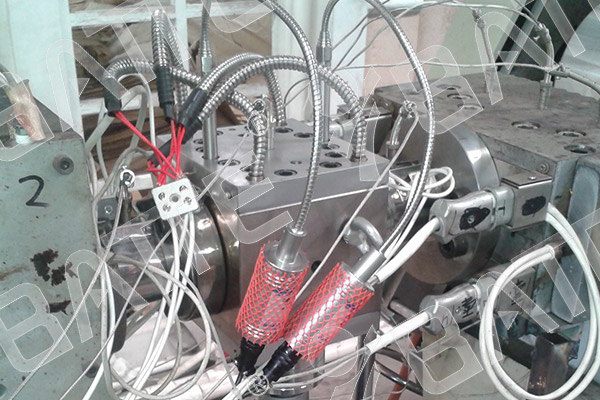Adjusting the operating pressure of a melt pump is a process that involves multiple steps and factors. Below are some key steps and considerations:
I. Understanding the Melt Pump and Its Operating Characteristics
First, it is essential to have a comprehensive understanding of the melt pump's working principle, performance parameters, and the characteristics of the material being processed. Different melt pumps may have varying pressure adjustment ranges and methods, and the viscosity, temperature, and other properties of the material can also affect pressure regulation.
II. Choosing the Appropriate Pressure Regulation Method
The adjustment of the operating pressure of a melt pump typically employs a closed-loop control system, with specific methods including:
Regulation Based on Pressure Sensors:
Pressure sensors are installed at the inlet and outlet of the melt pump to measure pressure values in real-time.
Based on the measured pressure values, the control system calculates and adjusts the stroke closed-loop of the variable frequency drive.
The pump's speed is adjusted accordingly to achieve the desired pressure value. If a target pressure value is preset, the system will automatically adjust to this set value.
Feedback Regulation Based on Inlet Pressure Values:
An inlet pressure sensor monitors the pressure value at the inlet of the melt pump.
When the inlet pressure deviates from the set value, the control system sends feedback information to the extruder.
The extruder adjusts the feeding speed based on the feedback information, thereby controlling the inlet pressure of the melt pump.
Regulation Based on Pump Body Temperature:
Temperature sensors are installed on the high-temperature melt pump body to monitor the temperature in real-time.
Based on the temperature data, the control system adjusts the working state of the heating equipment to respond to excessively high or low pressure values.
Stable pressure regulation is indirectly achieved through temperature control.

III. Specific Operation Steps
Check Pressure and Temperature Sensors:
Ensure that all sensors are installed correctly and functioning properly, capable of accurately measuring pressure and temperature values.
Set the Target Pressure Value:
Based on production process requirements and schedules, set the target pressure value for the melt pump in the control system.
Start and Observe:
Start the melt pump, extruder, and related equipment. Observe the readings of the pressure and temperature sensors.
Monitor the system's operating status in real-time to ensure that all parameters fluctuate within the set range.
Adjust Parameters:
If there is a deviation between the actual pressure value and the target value, adjust the control parameters based on the magnitude and direction of the deviation.
For example, you can adjust the speed of the variable frequency drive, the feeding speed of the extruder, or the power of the heating equipment.
Maintain Stable Operation:
During the adjustment process, maintain stable system operation to avoid instability or material waste caused by sudden changes in operating parameters.
Regular Inspection and Maintenance:
Conduct regular inspections and maintenance of the melt pump and related equipment to ensure they are in good working condition.
Pay particular attention to the accuracy and reliability of key components such as pressure sensors, temperature sensors, and the control system.
IV. Precautions
Avoid Excessively High or Low Pressures:
Excessively high pressure may damage the melt pump and its sealing system, leading to material leakage or equipment damage.
Excessively low pressure may affect material conveying efficiency and product quality.
Maintain System Stability:
During the adjustment process, maintain stable system operation to avoid instability caused by frequent parameter adjustments.
Safety Precautions:
Strictly follow safety operating procedures during operation to ensure the safety of personnel and equipment.
Flexible Adjustment Based on Specific Conditions:
Since different materials and production processes have varying requirements, flexibly adjust control parameters and operating methods according to specific conditions in actual operations.
Email: info@battemachinery.com
WhatsApp: +86 158 38331071
pre:Application scope of PET granulation plastic extruder melt pump
next: What is the difference between a melt metering pump and a regular extruder?
